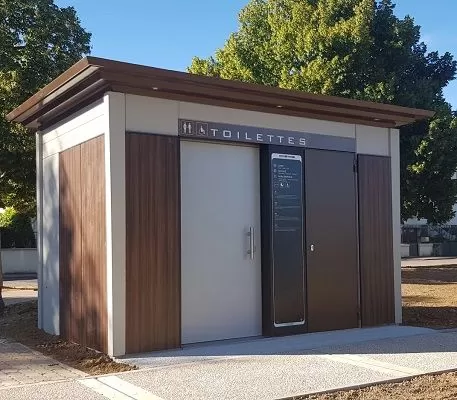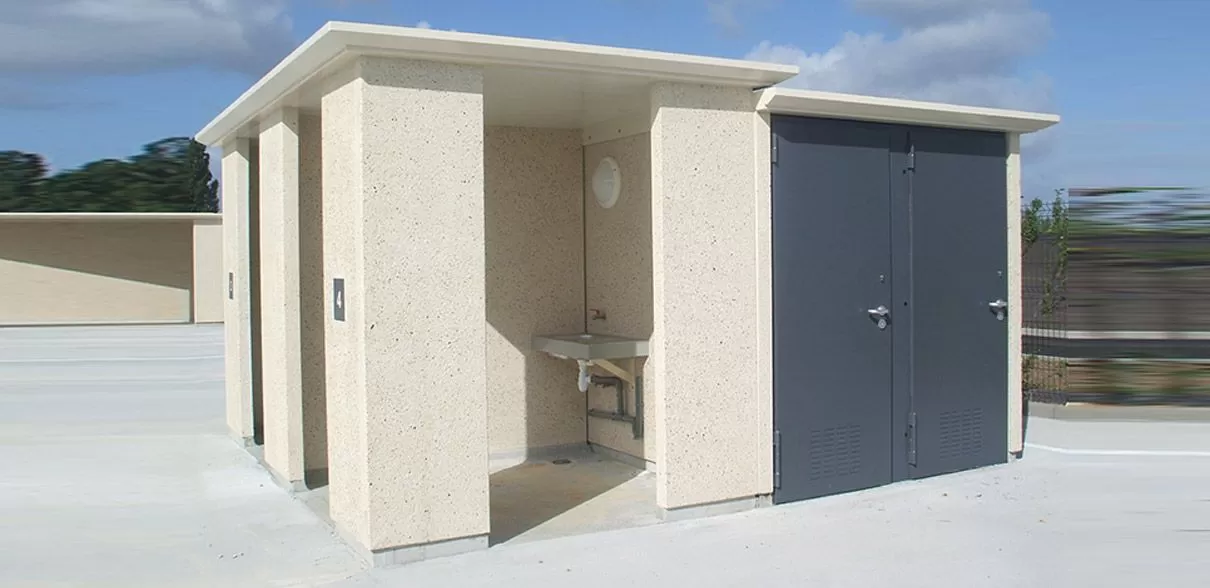It can be difficult to get everyone to agree about toilets. Towns and cities regularly attempt this exercise, but it often provokes indignation and consternation from some residents. ‘Uritroitoirs’ in Paris, mobile urinals in Lyon... These experiments have received lukewarm receptions, even though major cities are often lacking in public toilet facilities. How do you find the right formula to please the greatest number of people ?
Access to toilets : health, social and environmental issues
Guaranteeing access to toilets which offer good hygiene and privacy is both a social and a public health challenge. The UN estimates there are over 3 billion people lacking this essential human right. The worst-affected areas demonstrate the full extent of the problem. Outdoor requirements raise issues of a lack of cleanliness and safety, which tend to reinforce existing social inequalities.
France has almost 25,000 public toilets in around 7,000 towns and cities. Rural and isolated areas are obviously less well serviced. There must be sufficient public toilets to meet the needs of the population. The city of Rennes has around 5 installations for every 10,000 inhabitants, a figure which is almost ten times higher than Marseille. Their distribution remains relatively uneven across France, both between rural and metropolitan communities, and between the regions.
Toilet facilities by themselves are insufficient. They must be properly maintained and easily identifiable by their users. On the occasion of the last World Toilet Day, it was pointed out that in France, 81% of children aged between 6 and 11 regularly stop themselves going to the toilet. Why is this? A lack of hygiene and privacy in school environments. These adaptive behaviours can have health consequences for the youngest children, and also for adults facing similar problems in the public space.
Public toilets are an integral item of urban furniture, but they must also meet increasing demands in terms of accessibility and their environmental impact. The goal is to guarantee access for persons with reduced mobility wherever this is technically possible, and also to promote environmentally responsible designs and operating conditions.
WCs which are fully integrated into their surroundings
Poorly designed sanitary facilities can be a hindrance for the users of public spaces.
Choosing the right location will play a decisive role in how well they are integrated. Pavement encroachment can impede pedestrian traffic. Extra space can also be taken up by users waiting for their turn. This should not be neglected in tourist areas or crowded places. There is always the risk of congestion around the facilities.
Their visual appearance can also be a problem. This was one of the criticisms levelled at the mobile toilets installed by Lyon’s city council. The initiative itself was welcomed given that the city lacked public toilets. However, their locations in what is a Unesco World Heritage site have been strongly criticized. The urinals create an eyesore in the exceptional architectural surroundings. They are too exposed and many people dislike using them because of this.
Well-integrated WCs have no effect on traffic flows or the ambiance of the site.
A simple, effective and recognizable design
The choice of the design for public toilets is a particularly delicate one. The installation must be both discreet and clearly visible. It must blend into the background while remaining easily identifiable by its users. Two criteria that were lacking with the ‘Uritrottoirs’ in Paris. The innovative format surprised many local residents, but the units were not always clearly identifiable to passers-by.
For public facilities such as WCs, it is usually better to stick to more conventional designs. Other pieces of street furniture, such as benches and bus shelters, are more adaptable to an avant garde approach. When looking for a public toilet, users often scan the space with their eyes looking for a circular or rectangular hut marked with the usual pictograms. To help them in their quest we should use simple shapes and clearly visible and easily recognizable signs.
Public toilet accessibility and environmental responsibility
The regulations concerning the accessibility of public spaces and facilities for persons with reduced mobility also apply to toilet facilities. The challenge is to install modules that meet the minimum dimensions to make them accessible, but without obstructing traffic on the public thoroughfare. PRM toilets are compulsory in all areas where they can be installed, and if they cannot, they must be installed in a more distant location and appropriately sign-posted.
Environmental factors are assessed at every stage of a product's life cycle. We consider the carbon footprint of the materials used and the level of integration into the local ecosystem. Taking Lyon as an example, the much-criticized public toilets form part of a virtuous environmental approach in which the urine is used to fertilize the region's farmland. The trick is to strike the right balance between user expectations, architectural considerations, health requirements and environmental requirements.
Francioli manufactures accessible, clean and long-lasting toilets
Francioli has specialised in the manufacture of public toilets and street furniture for over 35 years and offers toilets that are easy to integrate and maintain.
Our sleek, contemporary designs complement most existing architectural styles. Inside each module, everything is done to ensure they remain impeccably hygienic: automated floor washing, automated flushing of toilets and external urinals, etc. You can also program opening and closing times when they are installed in public gardens, for example.
At Francioli we like to use concrete as it is environmentally inert and can be recycled at the end of its life. Our concrete public toilets blend in perfectly with their surroundings, both visually and environmentally. Being prefabricated, they are economical, easy to install and can be customized with a vast selection of configurations and sizes available.




